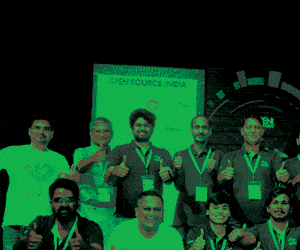With the launch of OpenShift 4.16 and the general availability of Advanced Cluster Security Cloud Service, Red Hat empowers organizations to enhance AI-enabled and edge applications while maintaining robust support for traditional workloads.
Red Hat, Inc. introduced significant updates and enhancements to Red Hat OpenShift, the industry-leading hybrid cloud application platform powered by Kubernetes, along with the general availability of Red Hat Advanced Cluster Security Cloud Service. The new features, delivered with Red Hat OpenShift 4.16, are designed to help organizations more easily develop, connect, and enhance the security of diverse workloads, ensuring a consistent experience across applications and environments.
Organizations increasingly rely on intelligent apps, including AI-enabled and edge applications, to deliver insights quickly where needed. The latest enhancements help connect disparate, diverse workloads and create a consistent management and deployment experience across the hybrid cloud, regardless of whether the application is traditional or AI-driven.
Modern Virtualization Options
As the virtualization landscape evolves, many organizations seek platforms that can run virtual machines (VMs) alongside modern containerized applications and serverless functions. The company offers a Virtualization Migration Assessment, guiding organizations through risk assessments to determine the best migration path from legacy virtualization solutions. The latest enhancements simplify the migration and modernization of virtualized workloads.
Key features include:
- Metro Disaster Recovery: Provides regional disaster recovery for VMs using OpenShift Data Foundation and Advanced Cluster Management for Kubernetes.
- Hot-add CPU: Allows users to add additional vCPU resources to a running VM, improving memory density and enabling easier VM scaling.
- Multi-cluster Virtualization Monitoring: Enables users to view all VMs across multiple OpenShift clusters and quickly build reports.
Enhancing Edge Service Quality
Minimizing service downtime is crucial for edge applications. It introduces a “shift left” approach with image-based updates (IBU) for single-node OpenShift, allowing a large portion of the update process to occur in pre-production. If an update fails, it can be rolled back to restore service quickly.The OpenShift-based Appliance Builder is available as a technology preview, enabling the company’s partners to build turnkey, customized appliances with self-contained OpenShift instances. This simplifiesinstallation at remote edge sites with limited connectivity.
The Advanced Cluster Security Cloud Service, now generally available, is a fully managed Kubernetes-native security service supporting both Red Hat OpenShift and non-Red Hat Kubernetes platforms like Amazon EKS, Google GKE, and Microsoft AKS. This service enables organizations to secure workloads within minutes and scale across clouds and geographies without additional complexities. The service are now generally available.
Mike Barrett, Vice President and General Manager of Hybrid Cloud Platforms at Red Hat, emphasized the importance of modernizing both infrastructure and applications to support customer needs. He highlighted that Red Hat OpenShift 4.16 allows organizations to prepare for AI demands while managing traditional applications and infrastructure from a single platform.










































































